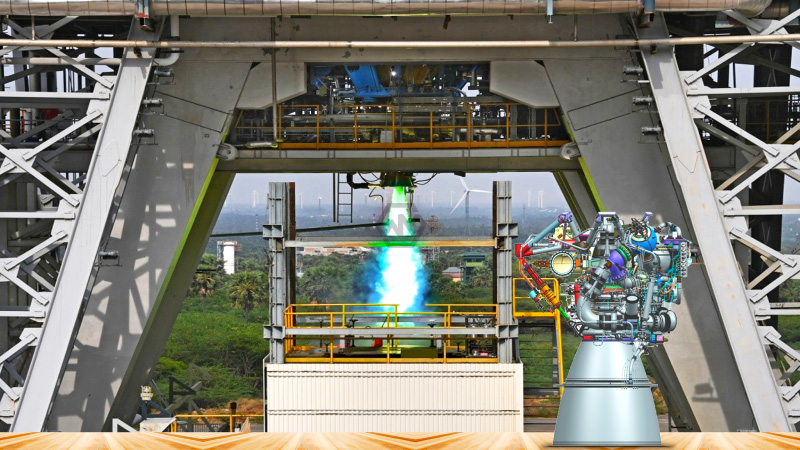- ISRO successfully conducted the first hot test of the 2,000 kN semicryogenic engine on March 28.
- The new engine will replace the current L110 stage in LVM3, increasing payload capacity.
- A series of further tests will refine the engine before full integration.
The Indian Space Research Organisation (ISRO) has taken a major step forward in rocket propulsion with the successful hot test of the Engine Power Head Test Article (PHTA) for its semicryogenic engine.
This semicryogenic engine, which runs on Liquid Oxygen and Kerosene, will replace the existing hypergolic-fueled core stage in the LVM3 rocket.
SRO’s Semicryogenic Engine Marks Key Milestone for Future Launch Vehicles
ISRO’s ongoing efforts to develop a powerful 2,000 kN semicryogenic engine signal a shift toward advanced propulsion technology. The successful hot test of the PHTA demonstrated the engine’s key components, including the pre-burner, turbo pumps, and control systems.
The semicryogenic engine, designated SE2000, will power the SC120 stage, replacing the L110 liquid core stage of the LVM3. This enhancement will significantly boost payload capacity, making India’s launch vehicles more competitive on the global stage.
Compared to the existing hypergolic fuel systems, semicryogenic engines offer higher thrust and better efficiency. The use of kerosene and liquid oxygen as propellants reduces operational costs while improving performance, making them a preferred choice for next-generation rockets.
As ISRO continues testing and refining the engine, this development marks a crucial step toward more powerful and cost-effective space missions. The success of this project could pave the way for further innovations in India’s space program.
ISRO’s breakthrough in semicryogenic propulsion is a significant leap in India‘s space technology, positioning the country for more ambitious and efficient missions in the future.
“The important achievement of the last century was the development of technology. The most important achievement of this century will be the development of humanity.” — Dalai Lama



